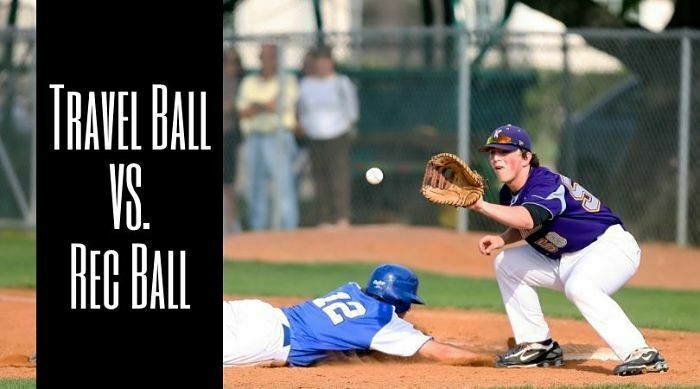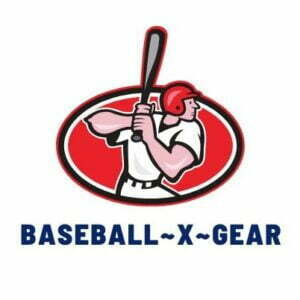Travel baseball has taken over the youth ranks.
Little League is no longer the king of youth baseball. High school ball is no longer where the top players get noticed by major league scouts. The focus has shifted to club ball and away from the confines of recreation leagues.
Still, most young players play both forms of the game and there’s something to be said for each one. Little League can be a lot of fun as players play alongside their friends from school, competing for bragging rights around town. It’s the classic American experience, the one most folks think of when they think of youth baseball. Heck, it’s nearly synonymous with it.
The divergence is a recent one, one that has been created by a whole host of different factors. As baseball has become more specialized, as players have become more focused on the game from an early age, infrastructure has sprung up around them to support their desire for a more competitive environment fostered around development.
At amateur baseball’s highest levels, hitting the showcase circuit has become a necessity for most players with a desire to play college or professional ball. Scouts can now forgo summer ball games on the American Legion field, where the talent is varied and there is a lower density of professional prospects, turning their eyes toward those showcases. With more focused players and more specialization, there is an increased level of play and thus, a higher density of future standouts.
So, what’s the difference in the two levels of play? And which level is right for young players? We’ll break it down for you below.
| Rec Ball | Travel Ball | |
| Fees | In the $100s | In the $1000s |
| Travel | Stays local | Regional & National |
| Focus | Fun & Skill Development | Specialization |
| Commitment | Players often play other sports | Players commit to baseball year round |
| Time | Practice during the week and weekend games | practices and/or games during the week and weekend tournaments |
Rec Ball
Recreational ball, or “rec ball” as it’s known, is where most players get their start. Many young players compete in rec leagues by playing tee ball and rise through the ranks as they grow older.
Rec ball is usually played at a local level. For children 12 and younger, recreational ball usually takes place within the confines of a Little League. These leagues feed into a main league, the “major” level of the Little League, where children from 11-13 can showcase their skills. Prior to that, there’s the “minors”, where children beneath the ages of 11 can learn the fundamentals and develop a passion for the game.
Little League baseball is a big deal in many towns. Because the leagues are locally oriented, players often compete alongside friends and acquaintances, folks they know from school and other sports leagues. That makes for a fun environment, where there are bragging rights and personal relationships on the line. Who doesn’t want to get a hit off their best friend? Who doesn’t want to strike out the kid that’s mean to them? That’s what makes those Little Leagues so special.
Most middle schools don’t offer baseball, meaning that players must matriculate to further rec leagues after they age out of Little League baseball. Across the country, there is no one league that they go to. Rather, it’s a very regional selection. Some teenagers will play Babe Ruth baseball while others will play PONY. Some go on to play Cal Ripken while others take part in town leagues. Eventually, high school players may take part in American Legion Leagues during the summer.
Rec ball differs from other versions of the sports because games are usually spaced out, with more teams playing 2-3 a week, during a shorter season. For example, many Little Leagues play fewer than 25 games across a three-month season. While teams sometimes play doubleheaders and sometimes play games on back-to-back days, that is a relative rarity.
This is due to the nature of rec ball and what it strives to do. At its core, rec ball is for fun. It serves as a way to get players hooked on the game, to get them to nail down the fundamentals and decide whether the sport is for them. At its lower levels, it is littered with players who will not play the next spring. Thus, the participation cycle is a sort of pyramid, as players drop out each season to focus on other sports.
Travel is limited, as occasional interaction with neighboring little leagues do occur. Additionally, fees are more affordable and there are generally fewer practices. This makes it ideal for players who want to focus on more than just baseball.
Club/Travel Baseball
While many players learn to play the game in recreational leagues, most serious players will eventually end up playing for a club team at some point in their career. That’s just the way youth baseball has evolved, what it has become in the last few years.
Until the last few decades, club baseball was an afterthought. Most baseball revolved around interscholastic baseball and recreational leagues, with town teams and American Legion filling in the gaps for the older players. That’s where scouts would go to pick out talent, it’s where college coaches would go to see what players they’d recruit and it’s where plenty of men in previous generations would spend their summer.
It was seasonal and more affordable, with games taking place in a more relaxed, localized atmosphere that didn’t require much travel. Travel was for the elite players, who played on a handful of super teams that would compete in a small number of tournaments. Many of those players had already garnered scouts’ attention and were looking for a place to further develop against other professional prospects. Thus, these teams usually sprouted up in talent-rich locations like Southern California, Florida, Texas, Georgia, and Virginia.
One team in particular paints a clear picture of club baseball’s origins. The Virginia Blasters were launched in 1992 by Marvin Townsend, a high school baseball coach in the Hampton Roads region. They were the first “club team” in the area, competing in the AAU baseball ranks. This team would go on to take in almost all of the area’s top talent, including future major leaguers David Wright, Michael Cuddyer, BJ Upton, Justin Upton, and Ryan Zimmerman.
By the time those players entered the Major Leagues in the mid-‘00s, youth baseball had adopted the Blasters’ model. Kids as young as seven years old were playing “club baseball.” So what is it? And how does it differ from rec ball?
Well, the main difference is the way travel baseball is organized. Instead of falling under the umbrella of a local little league, teams can be started by anyone who can field a roster and then pay for uniforms, practice time and entry fees. Entry fees are important because travel baseball is centered around tournaments, not individual games.
Teams will often play two or three games on Saturdays and Sundays, playing in one tournament each weekend. Sometimes, there are games during the middle of the week, but these are mostly for practice – the tournaments are the main attraction. Those tournaments are put on by a few different governing bodies, including USSSA, AAU, and Perfect Game.
As evidenced by the name, this version of the sport does require a more regional focus. Because there are so many travel teams competing in each tournament, they are often held at facilities that feature many fields. Those are hard to find, especially in smaller towns. Therefore, they take place at larger cities, regional hubs, across the country.
More selective tournaments, ones that feature more top talent, will take place in the top baseball facilities that the country has to offer, spring training complexes, and “sports resorts” like the one at Disney World.
Thus, travel is a necessity. Luckily, most teams have a focus when it comes to how much they travel. Many stay within a two-hour radius while the top teams travel nationally.
Some of these teams are “organizations” within themselves, fielding teams at each age group, and sometimes fielding more than one in an age group. Organizations are usually run by baseball academies and feature full-time coaches who are focused on the development of young players.
That’s perceived as a major advantage of playing club ball – development. Because there’s so much baseball to be played, because most of the players playing club ball have decided to dedicate a tremendous amount of time to the game, players become better through it. They’re getting better coaching, playing against stiffer competition, and really specializing on it, and it alone.
Of course, better coaching and better tournaments cost money. Whereas rec ball may cost a few hundred dollars at most, club ball can run into tens of thousands of dollars, making it a serious commitment for both players and families. However, there are more affordable options, though these clubs may offer less when it comes to amenities such as cage time, experienced coaching and top-level tournaments.
At the highest level of club baseball is “showcases.” These are often put on by Perfect Game and feature a selection of the top potential pro prospects. These take place at major cities and are a big draw. Scouts flock to the talent-rich environment to see these showcases, which often feature a skills combine in addition to a tournament. Sometimes these tournaments are not composed of set teams, but rather rosters specifically selected by the host organization for a single tournament.
These tournaments are a great way for a player to get noticed by a scout or college coach, but they’re an exclusive lot. In order to get into them, you have to separate yourself.
Club baseball has come under fire in recent years for its cost and the fact that it forces players to specialize in one sport at such a young age. Because many players are now playing baseball year-round, there are more injuries and burnout is at an all-time high. Additionally, there are people within the sport that believe that club baseball is making the sport inaccessible to families without the financial means to pay for it.
Still, it continues to grow, and that doesn’t look to change anytime soon.
Related Articles
A lifelong baseball fan, Jacob Prothro has covered all levels of baseball for MLB.com, The Wichita Falls Times Record News and Rivals.com. Prior to that, he was a light-hitting outfielder in the Texas high school ranks. In his free time, Jacob roots for the San Francisco Giants and plays in a men’s league, where he still hasn’t figured out how to hit a curve.

